Learn about the string of hearts plant also known as the Rosary Vine. How to grow it and how to propagate some for your friends.
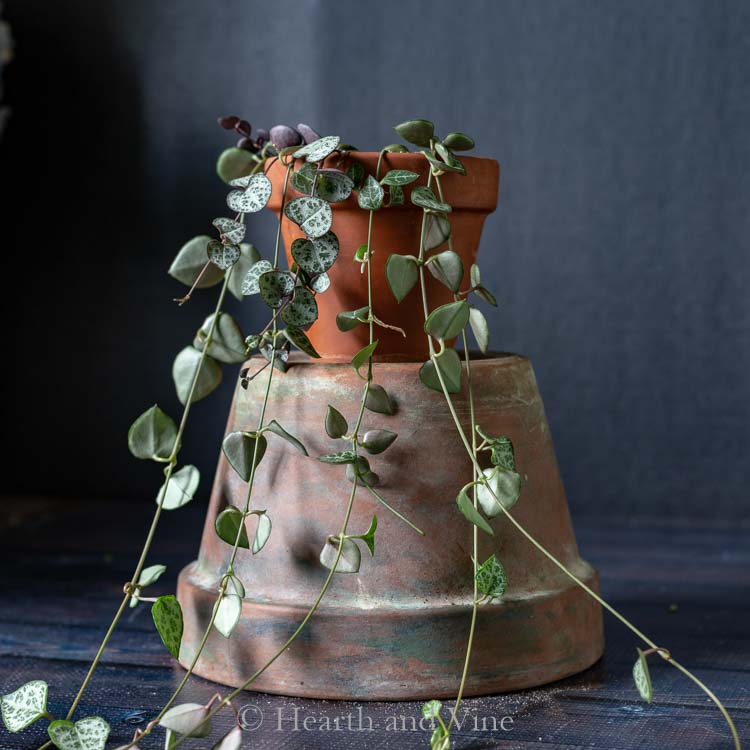
A while ago my daughter brought me some cuttings of her string of hearts plant.
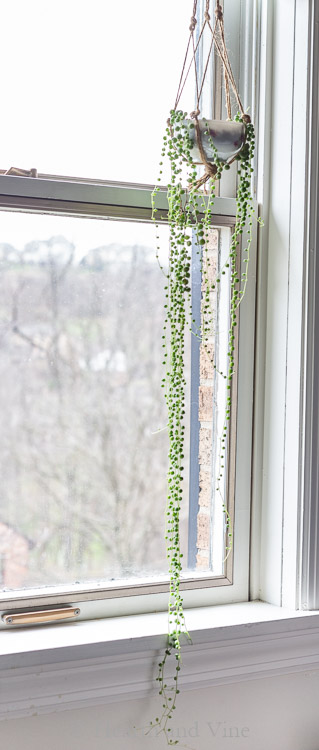
This string of pearls growing in a teacup from a blogger challenge is growing pretty well for me so I was excited to be an owner of another hanging plant beauty, the string of hearts plant.
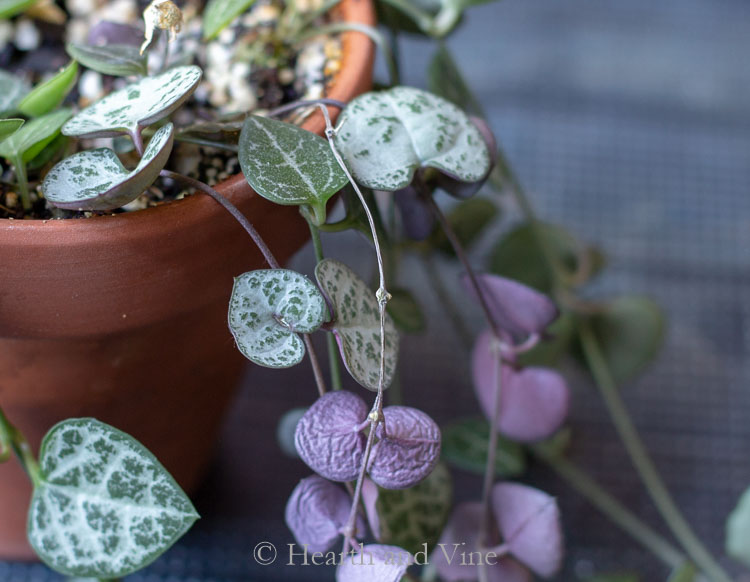
Scientific and Common Names
The scientific name for this plant is Ceropegia woodii. Commonly known as string of hearts (heart-shaped leaf) chain of hearts, collar of hearts, or sweetheart vine. Another common name is Rosary Vine because you often find these little beads growing along the stems.
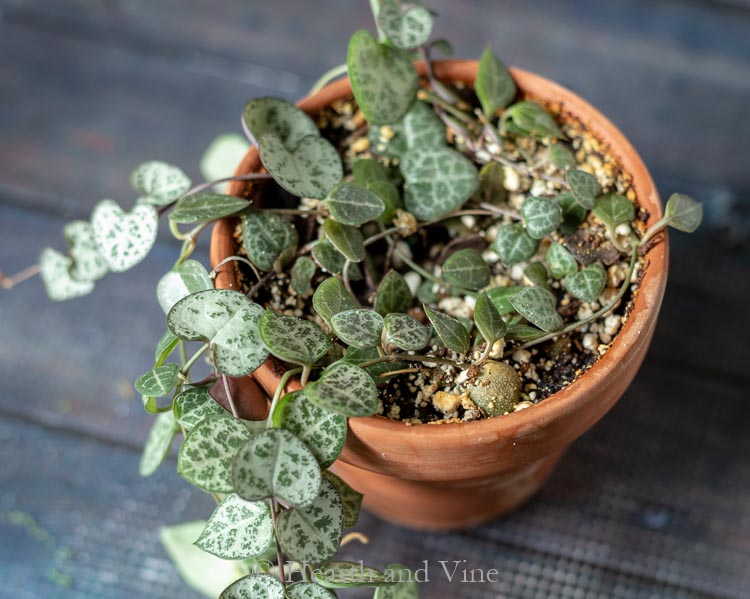
Those beads are actually little aerial tubers that you can place on the soil to propagate the plant. See the big round tuber in the front of the pot above.
How to Propagate String of Hearts
You can use water propagation. However, I've found the best propagation method comes from cutting a piece of the trailing vine and planting it directly into the soil.
- Take a few cuttings from an established plant.
- Prepare a pot with a drainage hole filled with fast draining potting mix.
- Water the soil then set the cuttings on top.
- Use some regular garden wire to pin some of the stems to the soil.
- Set the entire pot in a plastic bag and close it.
- Set it in a bright window and check it in a few weeks to see if it has rooted.
- Once rooted and showing some growth remove the pot from the bag and set it in a bright spot someplace where it has room to trail.
How to Care for a String of Hearts Plant
Lighting Needs
The string of hearts plants like bright light, preferably in a western or southern facing window where you would get bright indirect light but no direct sunlight. You'll know if this plant isn't getting enough light because you will see large spaces between the leaves on the vine. This is one that is not suited for low light conditions.
Water Needs
This plant is a succulent vine native to South Africa, so do not overwater. Make sure the top is dried out before watering. Water deep, about once every other week or less, making sure it drains thoroughly and does not sit in water. Like many houseplants, overwatering can cause root rot.
Fertilizer
You can use half-strength all-purpose houseplant fertilizer if you want but I'd only do this during the spring and summer which should be the active growing season.
Pruning
Some say that the vines will eventually need a haircut. When they do make sure you take advantage and propagate the cuttings into new plants to keep or give away.
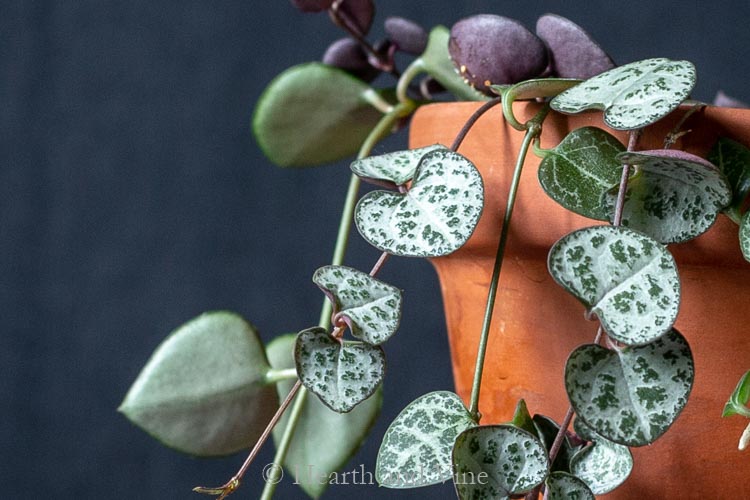
The leaves are a pretty dark green with a cream or whitish pattern on the top and a pretty solid dark purple on the back.
One interesting note about this particular plant. My daughter purchased her string of hearts plant from Glasshouse Works in Ohio.
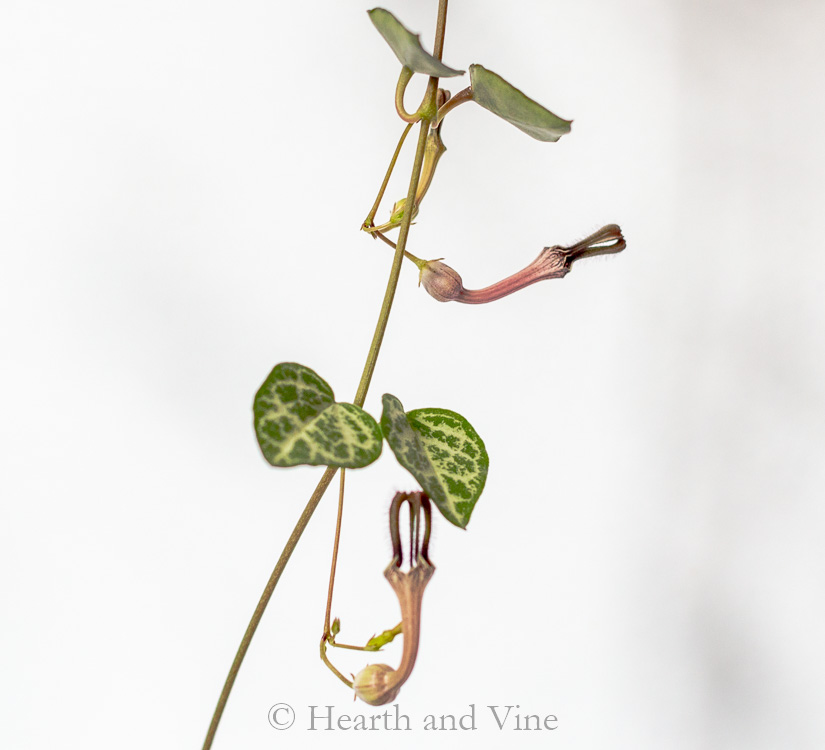
She actually gave me two varieties. One is the standard string of hearts with purple stems and purplish backs on the leaves.
The other is the same genus but a hybrid of sorts with more of a spade shape and green stems. They still look incredibly similar and are growing quite happily together.
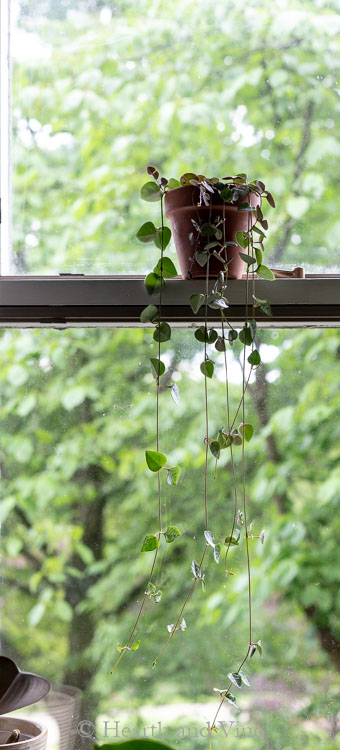
I'm loving this little guy. Right now I have it on top of a window ledge in my office but I really need to make a twine hanger for it like the teacup planter. I just may have to re-visit some old macrame techniques to house these hanging beauties.

More Vining Houseplants to Grow
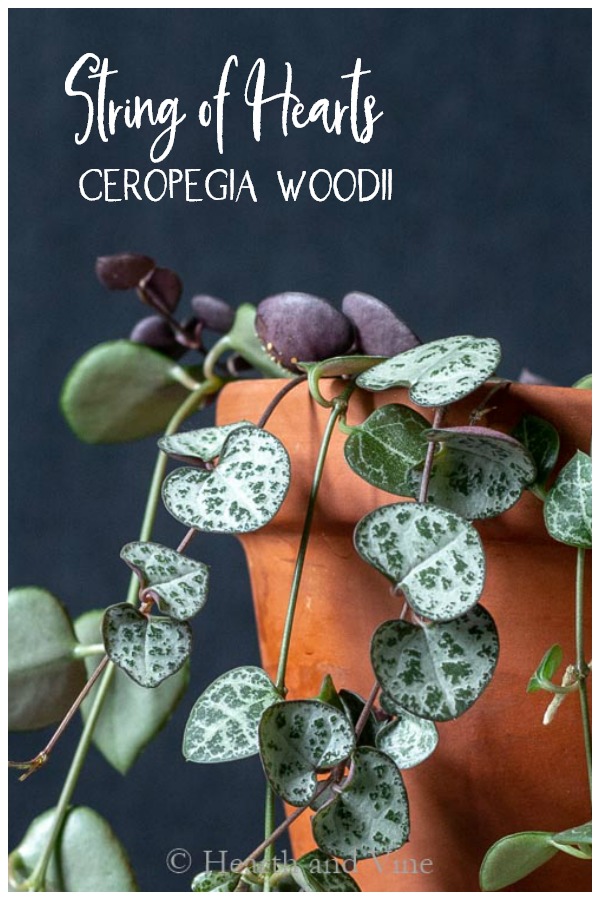



Leave a Reply